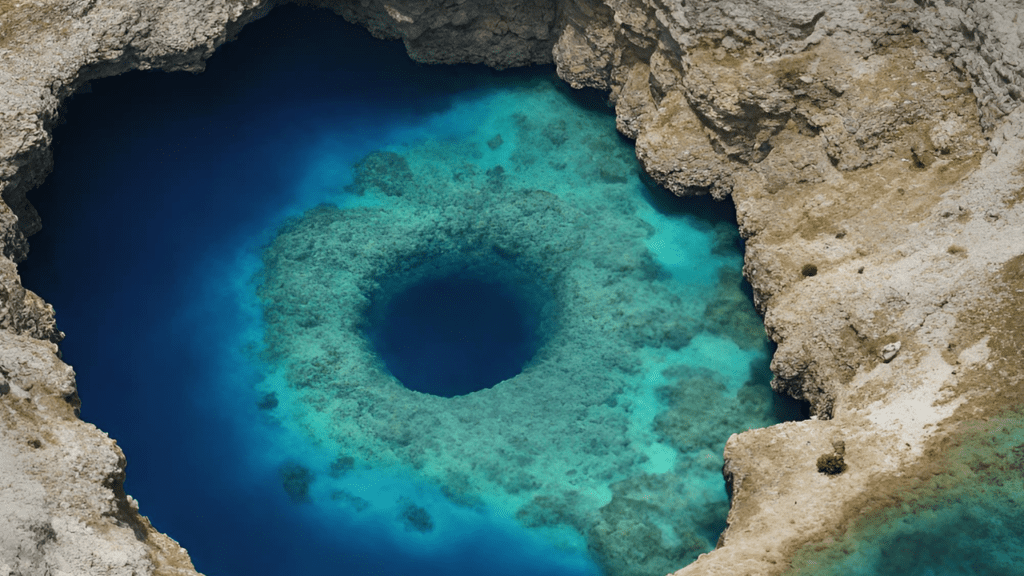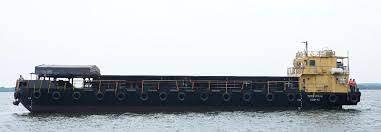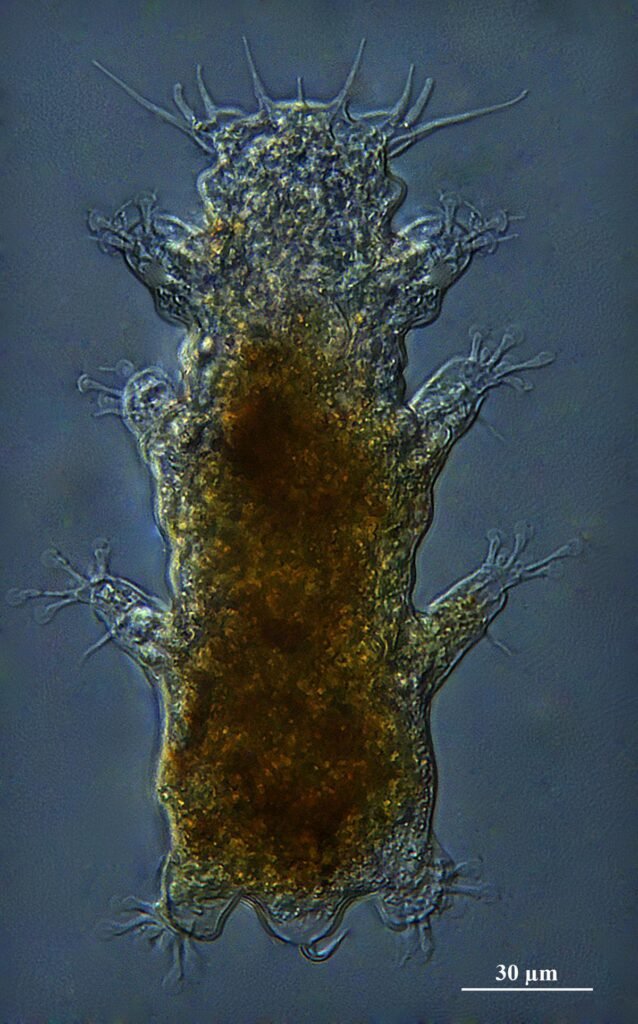1. Floating Solar Energy Technology


NHPC Limited, the biggest hydropower organization in India, has entered into a Memorandum of Understanding (MoU) with Ocean Sun, a Norwegian company, to introduce Floating Solar Energy Technology in India. This collaboration aims to explore various potential areas for showcasing Ocean Sun’s innovative technology, which utilizes photovoltaic panels. NHPC will identify suitable sites for installation, where the panels will be securely mounted on Hydro-Elastic membranes.
The technology developers will collaborate as per the agreement to showcase Ocean Sun’s floating solar energy technology, utilizing photovoltaic panels installed on hydro-elastic membranes.
The agreement is a step forward in the pursuit of sustainable development and the expansion of renewable energy capacity by NHPC. NHPC is involved in hydro power development as well as other renewable energy initiatives including solar, wind, and green hydrogen projects.
2. World’s Deepest Blue Hole is discovered in Mexico


Researchers recently found the deepest known blue hole in the world, the Taam Ja’ Blue Hole (TJBH), situated in Chetumal Bay off the Yucatan Peninsula in Mexico. Updated measurements reveal that the TJBH goes down to a minimum of 1,380 feet (420 meters) below sea level, exceeding the previous record holder, the Sansha Yongle Blue Hole (also called the Dragon Hole) in the South China Sea, by 390 feet (119 meters). The scientists have not managed to reach the bottom of the TJBH yet, indicating that it might have an even greater depth.
Blue holes are vertical caverns or sinkholes that are filled with water. They are commonly found in coastal areas where the bedrock is soluble, such as limestone, marble, or gypsum. These formations occur when surface water seeps through the rock, dissolving minerals and creating larger cracks, which eventually leads to the collapse of the rock structure. Blue holes usually contain water that is influenced by tides and can have a composition of fresh, marine, or mixed chemistry. Additionally, they may offer entry points to submerged cave passages.
In 2021, the TJBH was initially measured using echo sounders, which indicated a depth of 900 feet (274 meters). However, a more precise assessment was conducted during a recent expedition in December 2023, utilizing a conductivity, temperature, and depth (CTD) profiler.
The CTD profiler provided detailed information about various water layers present in the blue hole. Notably, conditions below 1,312 feet (400 meters) resembled those found in the Caribbean Sea and nearby coastal reef lagoons.
3. Newly discovered Green Lynx Spider


The Peucetia chhaparajnirvin, also known as the Green Lynx Spider, was recently discovered in Tal Chhapar, Rajasthan. This particular spider species was found during fieldwork conducted by Nirmala Kumari in the Tal Chhapar Wildlife Sanctuary, located in the Churu district. The collected specimens have been carefully preserved and are now housed in the entomology lab at the University of Rajasthan in Jaipur. The identification and description of this species were carried out at the Spider Research Lab, situated in JD Patil Sangludkar Mahavidyalaya in Daryapur, within the Amravati district.
The Vachellia nilotica (babul) tree is home to this particular spider, which can be found on its green leaves. Its green coloration helps it blend in with its surroundings and effectively ambush its prey. Additionally, its long legs enable it to move swiftly. This spider is active during the night and primarily feeds on small insects. The sanctuary area where it resides experiences extreme climatic conditions, characterized by scorching summers and chilly winters.
These spiders play a significant role as insect predators, particularly in low shrubs and herbaceous plants. They are essential for maintaining control over insects that can cause damage to plants and disrupt forest ecosystems. Their diet consists of various types of moths and their offspring, including the bollworm moth, leafworm moth, and looper moth.
4. Indian Navy Launches LSAM 20 Barge


The LSAM 16 (Yard 130) series, specifically the ‘Ammunition Cum Torpedo Cum Missile Barge, LSAM 20 (Yard 130),’ has been successfully launched by the Indian Navy. This remarkable achievement was made possible through the efforts of Suryadipta Projects Pvt Ltd, a private firm based in Thane, Maharashtra. The launch ceremony, which occurred at the Suryadipta Projects Pvt Ltd launch site, was graced by the presence of Madhusudan Bhui, INAS, GM NAD (Karanja).
The Indian Navy will be supported by the barge in transporting articles and ammunition to ships, whether at jetties or outer harbors. The presence of these barges will enhance the operational capabilities of the Indian Navy by ensuring smooth loading and unloading of goods and ammunition. A contract for constructing 11 ACTCM barges was finalized between the Ministry of Defence and Suryadipta Projects Pvt Ltd on March 5, 2021.
LSAM is an acronym for “Landing Ship Ammunition,” denoting the role of the barge in transporting ammunition for the Indian Navy. The Indian Navy has been concentrating on improving its operational capabilities and logistics support by acquiring various types of vessels, including barges, to bolster its fleet. The ‘Make in India’ initiative has encouraged private sector involvement in defense manufacturing, with the aim of reducing reliance on imports and fortifying the domestic defence industry.
The launch of the sixth LSAM 20 barge is a significant milestone in the ongoing 11 ACTCM Barge Project, highlighting the collaborative efforts between the Indian Navy and private sector shipyards. These indigenously designed and constructed barges will be instrumental in supporting the Navy’s operational commitments and logistics requirements, thereby enhancing India’s maritime capabilities and self-sufficiency in defence manufacturing.
5. DRDO Successfully tests long-range ‘SMART’ Missile System


The Defence Research and Development Organisation (DRDO) successfully carried out a flight test of the Supersonic Missile Assisted Release of Torpedo (SMART)from Dr APJ Abdul Kalam Island, situated off the coast of Odisha. As per the Ministry of Defence, SMART is a state-of-the-art missile-assisted lightweight torpedo delivery system aimed at strengthening the Indian Navy’s anti-submarine warfare capabilities well beyond the conventional range of lightweight torpedoes.
The ministry explained that this missile system, which is based on canisters, integrates multiple advanced subsystems. These subsystems consist of a two-stage solid propulsion system, an electromechanical actuator system, and a precision inertial navigation system.
Furthermore, the SMART system is furnished with a cutting-edge lightweight torpedo as its payload, which is deployed using a release system based on parachutes. The missile was launched from a ground mobile launcher. Throughout the test, the missile’s full range capability was effectively demonstrated. The statement mentioned that various state-of-the-art mechanisms, including symmetric separation, ejection, and velocity control, were validated during this test.
Rajnath Singh, the Defence minister, commended the DRDO and the industry partners for the successful flight-test of SMART. He expressed that the development of this system will further bolster the Navy’s capabilities.
The Supersonic Missile Assisted Release of Torpedo (SMART) is an advanced torpedo delivery system that utilizes missiles. This next-generation system consists of a supersonic missile carrier with a remarkable range of 643 km, as well as a lightweight torpedo capable of reaching distances of 20 km. The torpedo is equipped with a high explosive warhead weighing 50 kg.
The SMART missile system incorporates a two-stage solid propulsion system, electromechanical actuators, precision inertial navigation, and a datalink for mid-course updates and terminal homing of the torpedo. The primary objective behind the development of SMART is to counter the growing presence of Chinese submarines in the Indian Ocean region and to bolster India’s defence capabilities by achieving self-reliance.
6. Ajrakh, a Traditional Textile Craft Gets AI Tag


The traditional artisans of ‘Kutch Ajrakh’ in Gujarat have been honored with the prestigious Geographical Indication (GI) certificate by the Controller General of Patents, Designs, and Trademarks (CGPDTM), recognizing the rich cultural heritage of the region. This significant milestone highlights the centuries-old intricate textile craft that is deeply embedded in the vibrant culture of Kutch.
Ajrakh is a traditional textile craft that is highly esteemed in the cultural heritage of Gujarat, especially in the areas of Sindh, Barmer, and Kutch, where its tradition dates back thousands of years. This art form involves a detailed process of hand-block printing on specially treated cotton fabric, resulting in elaborate patterns that are rich in symbolism and historical significance.
The term “Ajrakh” is derived from the word “Azrak,” which means indigo, a popular dye used to create a blue hue. Historically, Ajrakh prints were limited to three colours, blue to represent the sky, red to symbolize the earth and fire, and white to depict the stars.
7. Project ‘ISHAN’


The Airport Authority of India has initiated the consolidation of four airspace regions into a single entity through Project ISHAN. Project ISHAN, stands for Indian Single Sky Harmonized Air Traffic Management, is headquartered in Nagpur and aligns with the government’s One Nation One Airspace initiative. Currently, the Indian airspace is segmented into four “Flight Information Regions” (FIRs) and sub-FIRs.
The transition is anticipated to bring advantages not only to the airlines with improved operational efficiency and enhanced flight capacity, but also to travellers by minimizing congestion and flight durations.
The AAI offers ATM services across Indian airspace and adjacent oceanic regions, encompassing more than 2.8 million square nautical miles. Among these, 1.04 million square nautical miles are continental, while 1.76 million square nautical miles are oceanic. FIRs are overseen by a sole governing body that is tasked with delivering air traffic services, which encompass details regarding weather conditions, visibility, wind patterns, runway obstructions, and emergency response services like search and rescue aid.
8. World Press Freedom Index


India’s position in the World Press Freedom Index fell to 159th place, ranking lower than Pakistan in the 2024 edition. The index, published yearly by Reporters Without Borders (RSF) since 2002, assesses the level of journalistic freedom in 180 nations. Norway continues to hold the top position in the ranking. Despite a slight improvement in India’s ranking compared to the previous year (moving from 161st to 159th), the country’s score actually declined.
According to the analysis conducted by Reporters Without Borders, India, often referred to as “the world’s largest democracy,” is currently facing a crisis in terms of press freedom. This situation has persisted since Prime Minister Narendra Modi assumed office in 2014.
The report stated that the improved rankings of certain countries in the Index can be misleading because their scores actually decreased, and the rise in the Index was due to the decline of countries that were previously ranked higher.
9. New Marine Species discovered in Tamilnadu


Researchers at the Department of Marine Biology at Cochin University of Science and Technology (CUSAT) have recently found a new species of marine tardigrade. The newly discovered species has been named Batillipes chandrayaani in recognition of India’s Chandrayaan-3 lunar mission. This tardigrade was found along the Mandapam coast in Tamil Nadu, marking the third marine tardigrade species to be identified in Indian waters.
Tardigrades, commonly referred to as ‘water bears’, are extremely resilient microscopic creatures with eight legs that can endure severe conditions by going into a desiccated, suspended animation state known as a “tun”.
The newly discovered species falls under the phylum Tardigrada, which encompasses over 1,300 documented species. Out of these, only 17% are classified as marine species. This particular species shares a comparable size to other tardigrades, with a length of approximately 0.15 millimeters (mm) and a width of 0.04mm. It is distinguished by its possession of four pairs of legs.
10. Ice in Moon’s North Pole


A recent study conducted by researchers from the ISRO’s Space Application Centre (SAC) revealed that the amount of water ice in the Northern Polar region of the moon is double that of the Southern polar region. The study was a collaborative effort between scientists from SAC/ISRO, IIT Kanpur, University of Southern California, and IIT Dhanbad. Situated in Ahmedabad, SAC serves as a prominent research and development facility for ISRO.
The data indicates that the quantity of subsurface ice within the top few meters is approximately 5 to 8 times greater than the amount present on the surface in the polar regions.
The team of researchers utilized a combination of seven tools including radar, laser, optical, neutron spectrometer, ultra-violet spectrometer, and thermal radiometer aboard the Lunar Reconnaissance Orbiter to investigate the source and spread of water ice on the Moon.
Furthermore, the findings suggest that the arrangement of water ice is probably influenced by Mare volcanism and selective impact cratering.


